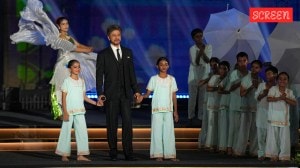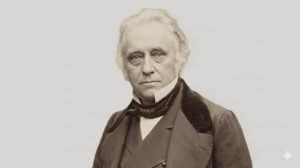Recalling New Delhi, 2013: When Kejriwal was the victor, and Sheila Dikshit was humiliated
That election, for the same seat where the AAP leader has now been defeated by the BJP’s Parvesh Sahib Singh, marked a watershed in Delhi’s politics, buried the Congress, and heralded the era of the AAP and Kejriwal. Here’s what happened
 In a full circle moment, Arvind Kejriwal and the Aam Aadmi Party were defeated by the BJP on February 8. In 2013, the AAP had unseated the incumbent Congress, led by Sheila Dikshit. (Express File Photos)
In a full circle moment, Arvind Kejriwal and the Aam Aadmi Party were defeated by the BJP on February 8. In 2013, the AAP had unseated the incumbent Congress, led by Sheila Dikshit. (Express File Photos)In the 2013 Delhi Assembly election, Arvind Kejriwal defeated the three-term incumbent Chief Minister Sheila Dikshit at the New Delhi constituency, effectively ending her political career, and sending the political fortunes of the Congress in the national capital on a downward spiral from which the party is yet to recover.
More than 11 years later, things came full circle for Kejriwal on Saturday (February 8). The former Chief Minister was defeated by a little over 4,000 votes by the BJP’s Parvesh Sahib Singh, the 47-year-old son of Sahib Singh Verma, one of the three BJP CMs of Delhi.
Like Dikshit’s Congress, Kejriwal’s AAP now faces an uncertain political future out of power.
Here’s a brief recall of Kejriwal’s electrifying 2013 victory that many believed was a harbinger of a new kind of politics in India, and the political context in which it came about.
IAC & formation of AAP
AAP and Kejriwal as a political leader grew out of the nonpolitical India Against Corruption (IAC) movement, which channeled the widespread disenchantment with the alleged corruption of the UPA 2 government into a mass agitation that rocked Delhi in 2011 and gripped the imagination of the entire country.
The anti-corruption movement, led by the veteran social activist Anna Hazare, revolved around the demand for a Jan Lokpal Bill that would create an independent body to investigate cases of corruption. While the IAC and Hazare were ostensibly apolitical, the multiple faces that the movement brought to the national limelight were not. Foremost among them was Kejriwal.
In 2012, about a year after the anti-corruption movement reached its peak in Delhi, Kejriwal, along with other prominent IAC activists such as lawyer Prashant Bhushan, social scientist Yogendra Yadav, and Kejriwal’s close aide Manish Sisodia, officially founded the AAP.
Hazare had consistently expressed himself as being against party politics. However, seeing that his protest fast – Hazare’s favoured political weapon – had failed to fundamentally move the political needle towards the change that the IAC wanted, Kejriwal and his colleagues took the plunge into politics to “clean up” the system and to ensure true accountability.
2013: Jaded incumbent vs political newbie
The AAP’s first electoral test came in the 2013 Assembly election in Delhi.
The Congress under Chief Minister Dikshit had then been in power for 15 years. Dikshit had been a popular and charismatic leader; over three consecutive terms, she had unleashed a gamut of developmental and infrastructure projects that had changed the face of Delhi in many ways.
During this time, the BJP, the main opposition in the capital, had been in disarray, torn apart by infighting – even as its profile expanded nationally, with Narendra Modi as the party’s new star.
Ahead of the 2013 election, however, Dikshit was fighting strong anti-incumbency, and her personal popularity had been dented, among other things, by the horrific December 16, 2012 bus gangrape that shook Delhi and triggered unprecedented street protests.
Across the country too, a strong anti-Congress sentiment had taken root. The government of Prime Minister Manmohan Singh faced a slew of corruption allegations and its own anti-incumbency, and the BJP was resurgent.
And then there was Arvind Kejriwal – a completely new player in the game, the man who represented, and was literally the product of, the popular disenchantment with Congress rule.
Dikshit contested the election from the New Delhi constituency for the third time. This was the erstwhile Gole Market constituency, which had been renamed in 2008 with some minor changes to its boundaries. Kejriwal the civil servant-turned-RTI activist-turned rookie politician took her on directly.
Some felt that Kejriwal’s contest against the powerful incumbent CM was little more than a political gimmick. But the upstart would pull off a victory that would kickstart his, and his party’s political career.
Era of AAP begins
The result of the election at the New Delhi seat, though not completely unexpected, was a surprise to most. Kejriwal’s margin of victory, too, surprised most political commentators.
Dikshit could not manage to reach even the 20,000 vote mark, winning barely 500 more votes than the third placed Vijender Gupta of the BJP. Kejriwal polled more than 44,000 votes, and defeated Dikshit by more than 25,000 votes.
A political novice from a ragtag startup party with limited resources had handily defeated arguably the most powerful figure in the history of Delhi politics. It was a remarkable political upset.
Throughout the campaign, Kejriwal had targeted Dikshit for alleged corruption, specifically for her alleged role in the so-called Commonwealth Games scam.
It paid off. “This is a victory of the people…it shows India has won, democracy has won,” Kejriwal said to a huge crowd of supporters after his victory was made official.
The Congress won only 8 seats, the AAP 28, and the BJP 31. With the House hung, Kejriwal went back on his previous promises of never teaming up with the Congress, and formed the government with the party’s outside support.
He resigned after 48 days, citing his failure to push through the Jan Lokpal legislation.



- 01
- 02
- 03
- 04
- 05



































